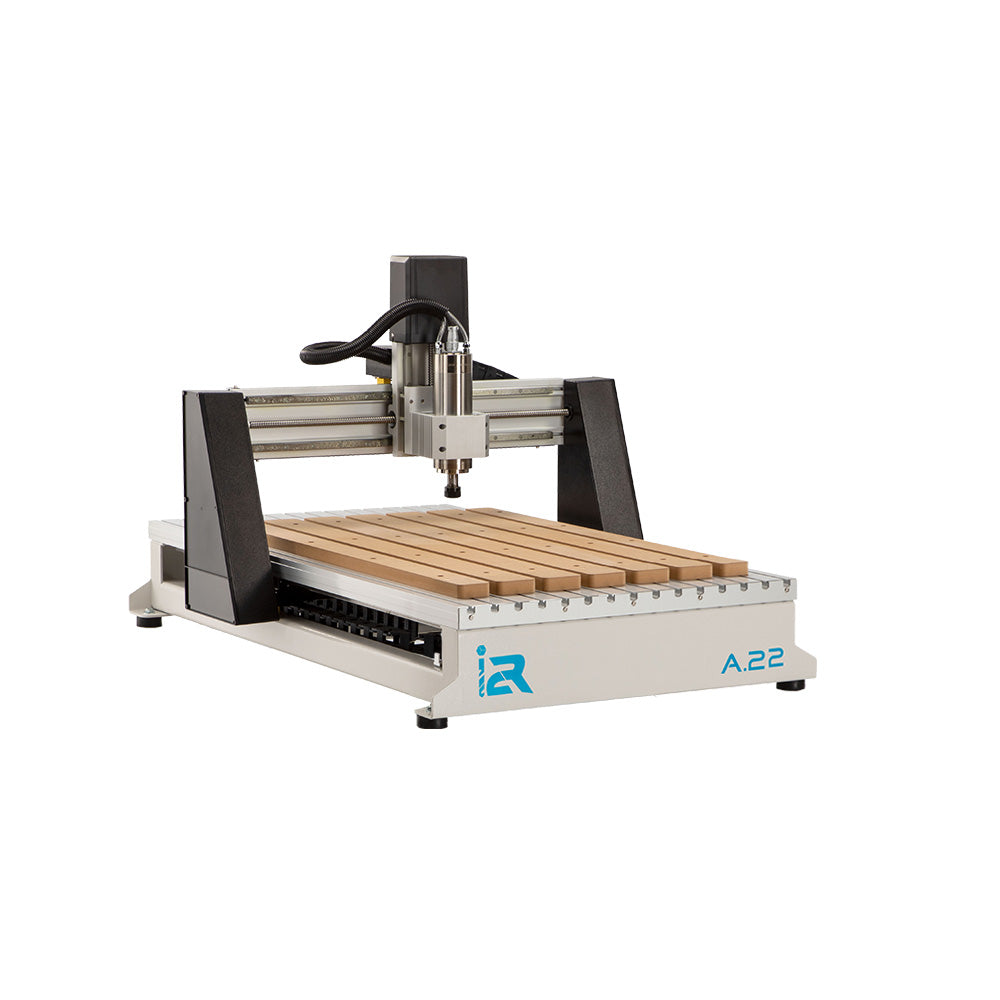Acrylic Longboard with Wooden Inlay
Inspired by the Ghost Board longboards, we at i2R CNC decided to design and create a 9"x41" longboard made from an acrylic base. To elevate this project, we challenged ourselves to include a non-angular wooden inlay.
Screw holes were also integrated into the wooden portion of the design, which were counterbored with a Vbit.
Some tool paths used in this project are:
Pocketing : inlay female in the acrylic - 1/4" Single O Flue Bit
Profile cut: inlay male piece from plywood 1/4" Endmill

For the wooden inlay, we used plywood that was pocketed down to the specified inlay height (.25 inches), and then profiled out with a 1/4" end mill. The tool path for the profile was made from cutting along the outside right of the line created for the pocketing pass in the acrylic. This would ensure that it was an exact positive of the negative created in the acrylic pocket. The screw holes were created by profiling the screw diameter with an 1/8" end mill through the material, and then pocketing down .125 inches with a 90 degree v-bit to allow the screw head to lay flush with the board surface.

The acrylic material used was cut from a large sheet of half-inch thick, clouded acrylic. The acrylic tool paths utilized the same design for the screws, but differed in the fact that a single flute .125 end mill was used in order to better preserve the acrylic, and prevent melting during the cut (it's also good to keep the feed around 1500 mm/min and the speed around 20,000 Rpm for the same reason). An identical adjustment was made for the pocketing of the inlay and the profiling of the board's outline. Both were done with a single flute quarter-inch end mill for the same reason.

Pleasantly, after the sections were cut, both the inlay and the screw holes aligned and fit together snugly, allowing the board to be constructed exactly as planned. However, like any first attempt, lessons are learned. We discovered that a half inch of acrylic is not thick enough to support the weight of a rider. Because of this, we had to recalculate the acrylic tool path for cutting a 1 inch thick piece of acrylic, which was as simple as adjusting material specifications in Aspire, and making the same adjustment in the necessary tool paths, such as any profiling pass that was intended to cut through the material. Luckily, thanks to the precision of our CNC, the pocketed inlay cut was identical in shape, size, and depth, so we were able to lay the original wood in the new acrylic.



